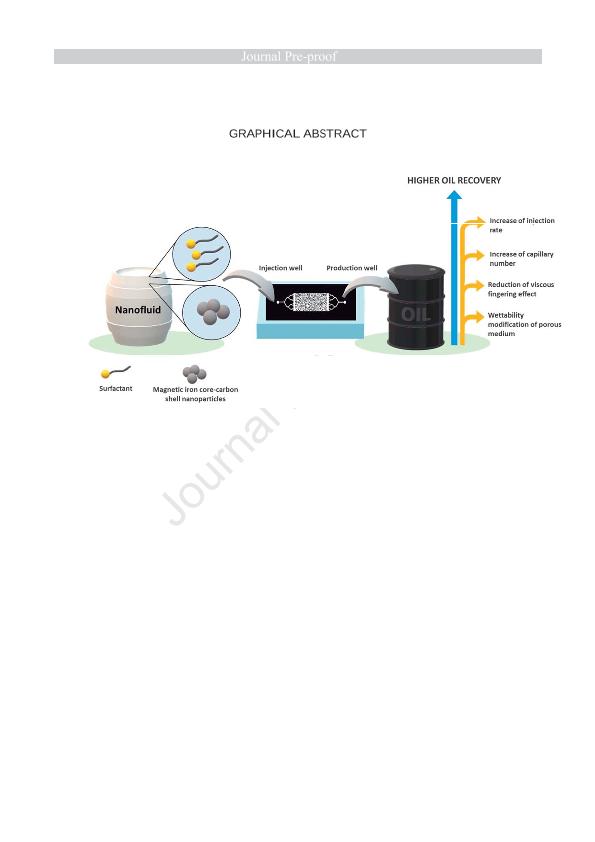Artículo
A microfluidic study to investigate the effect of magnetic iron core-carbon shell nanoparticles on displacement mechanisms of crude oil for chemical enhanced oil recovery
Betancur, Stefanía; Olmos Carreno, Carol Maritza ; Perez, Maximiliano Sebastian
; Perez, Maximiliano Sebastian ; Lerner, Betiana
; Lerner, Betiana ; Franco, Camilo A.; Riazi, Masoud; Gallego, Jaime; Carrasco Marín, Francisco; Cortés, Farid B.
; Franco, Camilo A.; Riazi, Masoud; Gallego, Jaime; Carrasco Marín, Francisco; Cortés, Farid B.
 ; Perez, Maximiliano Sebastian
; Perez, Maximiliano Sebastian ; Lerner, Betiana
; Lerner, Betiana ; Franco, Camilo A.; Riazi, Masoud; Gallego, Jaime; Carrasco Marín, Francisco; Cortés, Farid B.
; Franco, Camilo A.; Riazi, Masoud; Gallego, Jaime; Carrasco Marín, Francisco; Cortés, Farid B.
Fecha de publicación:
10/2019
Editorial:
Elsevier Science
Revista:
Journal of Petroleum Science and Engineering
ISSN:
0920-4105
Idioma:
Inglés
Tipo de recurso:
Artículo publicado
Clasificación temática:
Resumen
The main objective of this work is to evaluate the effect of the simultaneous use of a surfactant mixture and magnetic iron core-carbon shell nanoparticles on oil recovery via a microfluidic study based on the rock-on-a-chip technology. The surfactant solution used for all experiments was prepared based on a field formulation and consisted of a mixture of a hydrophilic and a lipophilic surfactant. Magnetic iron core-carbon shell nanoparticles with a mean particle size of 60 nm and a surface area of 123 m2 g−1 were employed. The displacement experiments consisted of waterflooding, surfactant flooding and nanoparticle-surfactant flooding and were performed using PDMS (polydimethylsiloxane)-glass microdevices type random network. The characteristics and design of the microfluidic device allowed to emulate a mixed wettability of a porous medium. Then, the oil was displaced by injecting the solution at a constant injection rate, until steady-state conditions were obtained. Furthermore, the effect of three injection rates corresponding to 0.1 ft day−1, 1 ft day−1, and 10 ft day−1 was investigated. The increase in the injection rate favored the oil recovery percentage. In addition, for all injection rates, the oil recovery decreased in the following order: nanoparticle-surfactant flooding > surfactant flooding > waterflooding. The nanoparticle-surfactant system at the injection rate of 1.9 μL min−1 presented the highest oil recovery (i.e., 84%). Likewise, nanoparticle-surfactant flooding showed a more stable displacement front and consequently, the highest capillary number among the injection fluids. Oil recovery by waterflooding was the lowest among the evaluated systems due to the viscous fingering phenomena under different injection rates. In addition, it can be observed that for all injection rates, the presence of the surfactant mixture and nanoparticles reduce the viscous fingering effect. The results can be used to visually and quantitatively analyze the role of the simultaneous use of nanoparticles with surfactants in enhanced oil recovery processes.
Palabras clave:
MICROFLUIDIC
,
ENHANCED OIL RECOVERY
,
NANOPARTICLES
,
SURFACTANT
Archivos asociados
Licencia
Identificadores
Colecciones
Articulos(SEDE CENTRAL)
Articulos de SEDE CENTRAL
Articulos de SEDE CENTRAL
Citación
Betancur, Stefanía; Olmos Carreno, Carol Maritza; Perez, Maximiliano Sebastian; Lerner, Betiana; Franco, Camilo A.; et al.; A microfluidic study to investigate the effect of magnetic iron core-carbon shell nanoparticles on displacement mechanisms of crude oil for chemical enhanced oil recovery; Elsevier Science; Journal of Petroleum Science and Engineering; 184; 106589; 10-2019; 1-45
Compartir
Altmétricas



